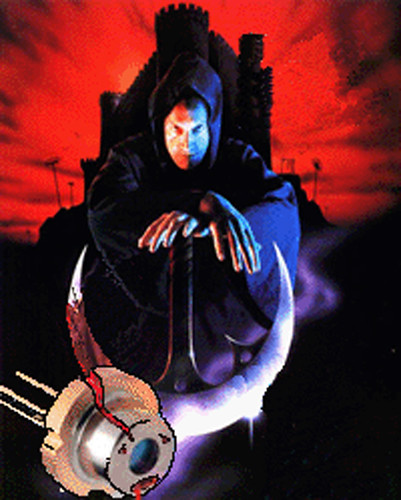BTW, did you say before that multiple diodes could be tortured at the same time with your setup?
The setup can torture multiple diodes, yes, but it would need to be expanded to also record the others...
It works like this. The cycler toggles a relay, which simply connects a driver to the output of a switching PSU capable of 3A. It's currently set to output the voltage of a Li-Ion to power switching drivers. The switching PSU is adjustable and can be set as high as Vin - 3V to power linear drivers...
With the 3A output ability, it could cycle multiple drivers side by side. If that's not enough, the relay has another side, which simply acts as a switch. The other side could be used to connect more drivers to an external power supply, if more power was needed. I could run several drivers off the cycler directly, and even more with the use of external power and the other side of the relay...
Problem is in recording all these diodes.. The cycler can cycle multiple lasers. But each laser would need it's own sensor. This means more photo-transistors in similar housings to this one, and more counters.
However if i was to cycle multiple diodes simultaneously, i would use time recorders instead.
The time recorders are tiny MCU's meant to be put in lasers to record the total ON time, so that when a laser dies you take it out and read off how long the diode ACTUALLY lived (because people often exaggerate in their estimates, besides it's not easy to estimate accuratelly)...
Zom-B made these time recorders a while ago and sent me several. I don't have the room to put them in lasers, but i wanted to use them in my cycler.
Otherwise, people who don't want to kill diodes but just USE their lasers could still contribute to the overall knowledge if they put such time recorders in their lasers. But i don't know if Zom-B is still around or making them...
Anyway, at this moment, since it's about expensive diodes, i am using BOTH the counter AND a time recorder wired to the photo transistor, as a backup in case of power failure (even tho the counter officially has a 50h data memory, and i tested it, i am still paranoid).
If i was testing multiple diodes, i would only use time recorders most likelly, altho i have recently found MUCH smaller LCD counters, which are actually quite cheap (and use up MUCH less power than this LED counter from e-bay)...
If i had to expand the setup now, i'd use time recorders tho, since i have them on hand.
So, every diode tested needs it's own driver, as long as the total current draw does not exceed 3A they can be powered by the Cycler directly, otherwise externally (where i could hook up 50 lasers if i wanted to - through the relay), every diode needs it's own sensor, and IF they are tested side-by-side, they can obviously only be tested with the same cycle duration.
That's what i would use to race diodes against each other, like comparing what happens with a high and a low efficiency GGW at the same current - which one would die first.... I could do one after another, but why waste the time (only my old cycler was limited to one diode at a time).
Also, while the test on one diode is running, i could at any given moment simply add another diode, as long as i aim it at it's own sensor connected to it's own time recorder or counter, it would get tested properly and completelly independent of the first one, only the cycle interval would be the same.
Otherwise,
Bryce, if you're willing to edit the video and increase the speed and all, no problem.. I'll just put my digicam on a tripod and let it record for a while.. But i have no experience editing and posting videos, not to mention the time... :undecided:
EDIT: Attached is a pic of Zom-B's time recorders and a reader.
Both the reader and the recorders have a microprocesor, the one on the tiny recorders just records the time one of it's pins it's toggled, or in a laser, when the laser is turned ON.
If i had the room to add them, i would put them in my lasers, especially the ones with more expensive diodes, such as 8x's. That way even the lasers made for normal use would provide useful info over time.
The recorder can be taken out and put onto the reader at any time, and the LED display will tell the time in seconds (one digit at a time), then it can be put back into the laser and keep recording the time. It can measure way further than any diode can live even with normal use.
I have four of these recorders and one reader, one of the recorders is now in the "Torture Chamber", serving as a backup, in case the counter's data memory was actually needed and would fail, or any other unexpected problems would occur. Also, to compare the final readings from the counter and the time recorder, to make double sure it's correct...
The recoders have a size just a tiny bit less than the latest flexdrives, i don't know if Zom-B ever finished the project and offered them, but if they were available, anyone who would be willing and able to use them in their lasers would be making a contribution to our knowledge about diodes...
I mostly got them so i could torture multiple diodes at once, if needed...





.....
)
..... (LOL
)




